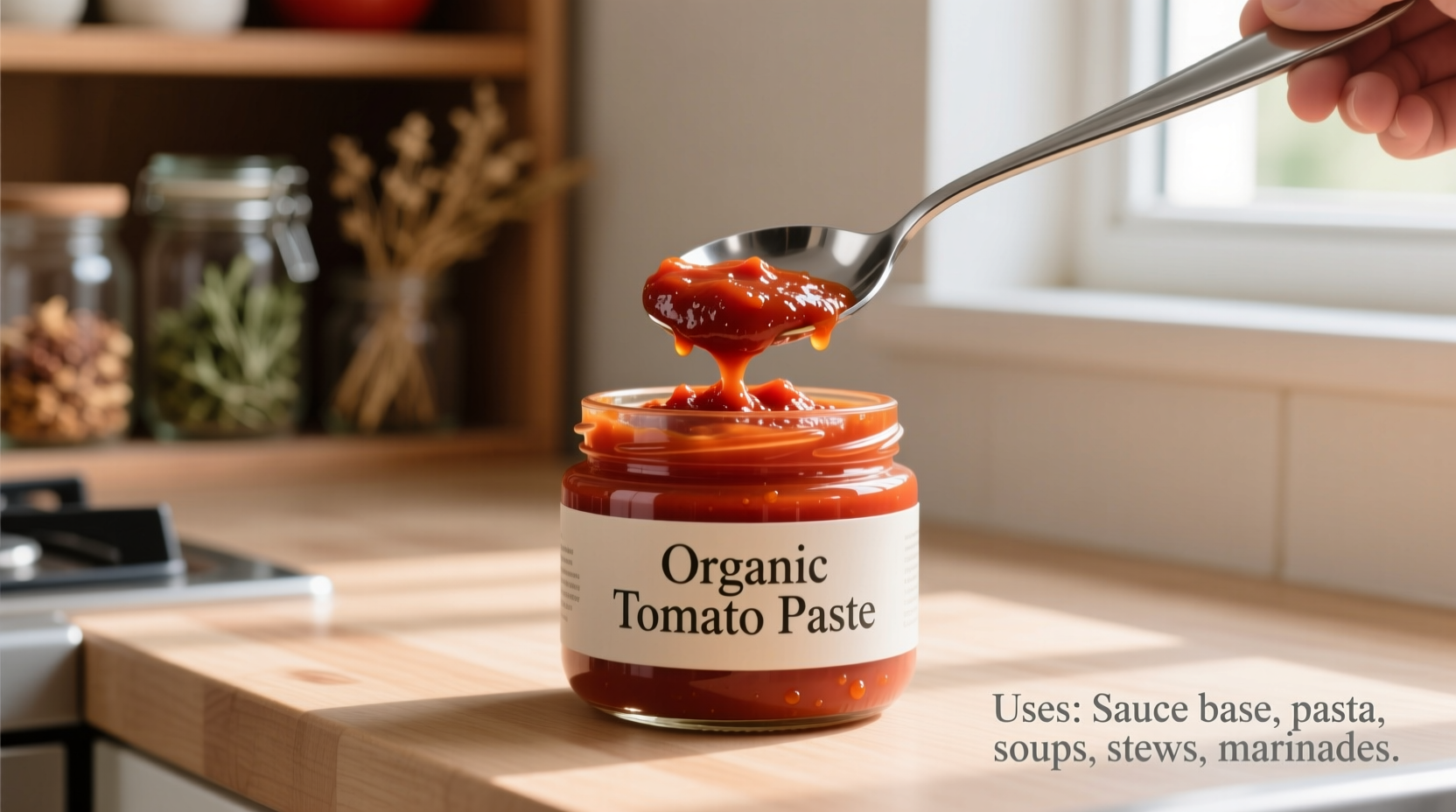Discover 12 practical tomato paste uses that transform everyday cooking—from building rich sauces to enhancing meat dishes—plus storage hacks that prevent waste and professional techniques to maximize flavor in every dish.
Tomato paste isn't just for spaghetti sauce. This concentrated ingredient packs umami depth that elevates everything from stews to marinades. Professional chefs rely on its versatility, but most home cooks underutilize this pantry staple. Let's explore how to harness its full potential.
Why Tomato Paste Deserves a Permanent Pantry Spot
Unlike fresh tomatoes or canned sauce, tomato paste undergoes extended cooking that concentrates natural sugars and glutamates. This creates a flavor foundation that builds complexity in dishes where subtle tomato notes would get lost. The USDA FoodData Central confirms tomato paste contains nearly six times more lycopene per ounce than tomato sauce, making it both a flavor and nutritional powerhouse.
| Tomato Product | Solids Content | Best Cooking Applications |
|---|---|---|
| Tomato paste | 24-30% solids | Flavor base, glazes, concentrated sauces |
| Tomato sauce | 8-12% solids | Pasta dishes, soups, quick sauces |
| Tomato puree | 12-16% solids | Balanced texture dishes, stews |
Essential Cooking Applications
Building Flavor Foundations
Professional kitchens always start sauces and stews with "sofrito"—a mixture of onions, garlic, and tomato paste cooked until the paste darkens slightly. This Maillard reaction creates hundreds of new flavor compounds. For best results:
- Cook paste alone for 2-3 minutes before adding liquids
- Use 2 tablespoons per pound of meat in braises
- Combine with aromatic vegetables for depth
Meat Enhancement Techniques
Tomato paste's acidity tenderizes proteins while its sugars promote browning. When making meatloaf or burgers, mix 1-2 tablespoons per pound of ground meat. For steak marinades, combine with olive oil and herbs—this creates a flavorful crust during searing. The FDA Food Code confirms proper acid levels help maintain food safety during marination.

Advanced Culinary Applications
Unexpected Flavor Boosters
Tomato paste works magic beyond Italian cuisine:
- Add 1 teaspoon to chocolate desserts for subtle complexity
- Stir into Bloody Mary mix for umami depth
- Blend with mayo for gourmet sandwich spread
- Whisk into vinaigrettes for balanced acidity
Storage Solutions That Prevent Waste
Most home cooks discard half-used tubes, but proper storage extends usability. Divide paste into 1-tablespoon portions in ice cube trays, freeze, then transfer to airtight bags. Properly stored, it remains usable for 9-12 months. The National Center for Home Food Preservation recommends keeping frozen portions below 0°F for optimal quality.
Contextual Usage Guidelines
Understanding when not to use tomato paste matters as much as knowing applications:
- Avoid in delicate seafood dishes where tomato flavor would dominate
- Don't substitute 1:1 for tomato sauce—dilute with water (1 part paste to 2 parts water)
- Never add directly to boiling liquids—cook first to eliminate raw flavor
- Reduce other acids when using paste in recipes calling for tomatoes
Creative Uses Beyond Traditional Cooking
Homemade Pizza Sauce Shortcut
Mix 3 tablespoons tomato paste with 1 minced garlic clove, 1 teaspoon olive oil, and dried oregano. Let sit 10 minutes before spreading on dough—this creates restaurant-quality sauce in minutes.
Vegetable Garden Boost
Dilute paste (1:4 with water) and spray on tomato plants every two weeks. The lycopene-rich solution may help prevent fungal diseases according to Cornell University extension research.
Expert-Recommended Substitutions
When tomato paste isn't available:
- Best substitute: Simmer tomato sauce until reduced by 75%
- For umami only: Use 1 teaspoon miso paste per tablespoon of tomato paste
- For color: Roasted red pepper puree (adjust for sweetness)
Note: Sun-dried tomatoes reconstituted in hot water work in Mediterranean dishes but lack the concentrated acidity of tomato paste.
Frequently Asked Questions
Can I use tomato paste instead of tomato sauce?
Yes, but dilute properly. Mix one part tomato paste with two parts water to substitute for tomato sauce. For recipes requiring long cooking times, use paste directly to build deeper flavor before adding liquids.
How do I prevent tomato paste from burning?
Cook tomato paste in oil with constant stirring for the first minute. Add a splash of water or wine if it starts sticking. Professional chefs often combine it with finely diced vegetables which release moisture during cooking.
What's the difference between tomato paste and tomato puree?
Tomato paste has 24-30% solids content versus 12-16% in puree. Paste undergoes longer cooking which concentrates flavor and sugars, while puree maintains more liquid content and fresher tomato taste.
Can I freeze tomato paste in its original tube?
Yes, but squeeze out excess air first and mark the fill level. For better portion control, freeze in tablespoon increments using an ice cube tray before transferring to freezer bags. Properly stored, it maintains quality for 9-12 months.
Why does my tomato paste taste bitter?
Bitterness occurs when paste burns or isn't cooked sufficiently. Always cook it for 2-3 minutes in oil before adding liquids to eliminate raw flavors. A pinch of sugar can balance excessive acidity in finished dishes.











 浙公网安备
33010002000092号
浙公网安备
33010002000092号 浙B2-20120091-4
浙B2-20120091-4